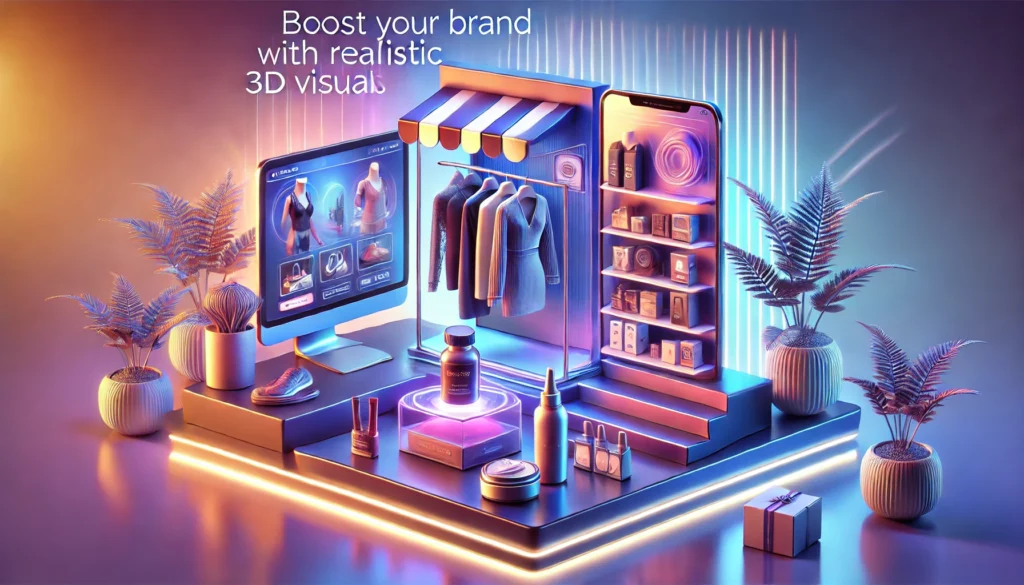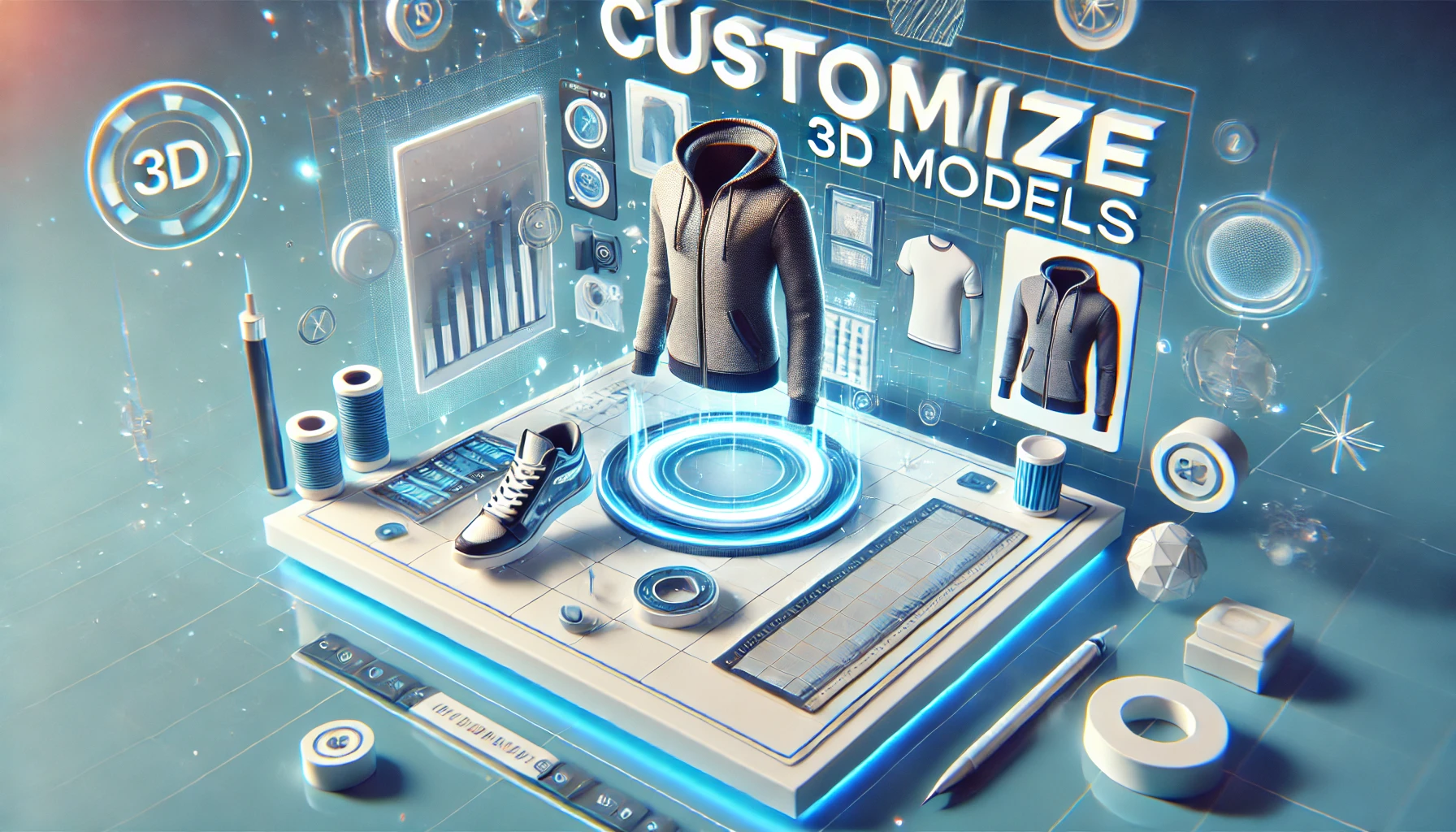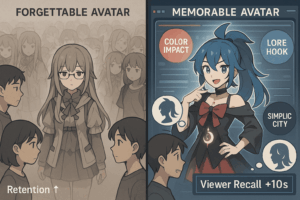In today’s highly visual world, businesses that customize 3D model gain a significant competitive edge. Whether you’re a small startup or an established enterprise, creating your own models tailored to your unique vision can transform your brand identity. With professional designers and modern tools, the process has become simpler and more accessible than ever. These technologies enable businesses to create interactive experiences that captivate and engage customers.
This blog explores how virtual reality, augmented reality, and advanced technologies are reshaping commerce. From producing accurate price estimates to creating lifelike animations, we’ll provide you with every detail to take your 3D modeling projects to the next level.
What is a Customize 3D Model?
A customize 3D model is a digital representation of an object, designed specifically to meet unique business or creative needs. Unlike generic models, these are tailored to match precise specifications, such as shape, texture, and functionality. Businesses use them to create realistic visuals for products, spaces, or concepts. From enhancing virtual reality experiences to showcasing products in augmented reality, customized 3D models deliver a personalized touch, ensuring alignment with brand identity and project goals.
Why Customize 3D Models for Commerce?
Custom 3D models help businesses enhance brand identity, engage customers with realism, and meet modern technological demands. Let’s see how:
1. Boosting Brand Identity
When you create your own models, you have various customization options to tailor every aspect of the design to match your brand’s presentation. Whether for furniture, vehicles, or digital props, these models provide a consistent visual style that sets your business apart.
2. Engaging Customers with Realistic Shapes
Realism plays a crucial role in customer engagement. Using advanced visualization tools, businesses can enhance the realism of their models, making products feel more tangible. By integrating textures, accurate materials, and detailed shapes, businesses can make their products feel more tangible. This focus on realism enhances trust and drives more conversions.
3. Meeting the Growing Demand for Virtual Reality
The rise of virtual reality and augmented reality in commerce makes 3D models a necessity. Whether for immersive shopping experiences or virtual try-ons, these models cater to the evolving needs of modern clients.
Statistics Highlighting Industry Trends
The growing adoption of AR and VR in commerce is driving higher engagement, increased sales, and transforming the global fashion market.
- The global fashion market is projected to grow from approximately $1.5 trillion in 2020 to around $2.25 trillion by 2025, with online sales expected to account for 40% of total fashion sales by then.
- Brands using augmented reality for virtual try-ons have seen conversion rates increase by as much as 200%, demonstrating the effectiveness of engaging customers through innovative technologies.
Steps to Create and Customize Your Own 3D Models
This section outlines the key steps to design and tailor 3D models, from planning to publishing, ensuring your project aligns with business goals.
Step 1: Defining the Scope of Your Project
Every great model starts with clear planning and well-defined design specifications. Define the scope by outlining your project’s object, expected features, and visual requirements. This ensures the final model meets your business goals.
Step 2: Collaborating with Professional Designers
Partner with skilled professional designers who can bring your ideas and concepts to life. Designers are adept at creating detailed animations, assembling complex shapes, and ensuring models align with your brand‘s identity.
Step 3: Using Advanced 3D Modeling Software
Select the right 3D modeling platform that matches your project’s complexity. These platforms offer powerful rendering capabilities that bring your models to life with stunning detail. Tools like Blender or Google 3D resources allow you to download millions of pre-built assets or start from scratch. For beginners, these platforms provide intuitive interfaces to learn and grow.
Step 4: Optimizing for Compatibility
Ensure your 3D models are optimized for use across different platforms. Whether they’ll be viewed in browsers, incorporated into games, or used in augmented reality, compatibility with compatible others is key to delivering a seamless experience.
Step 5: Submitting and Publishing Your Models
After finalizing your design, submit the models to publish on your internal platform or online marketplace. Publishing allows you to share your designs with millions of potential clients globally.
Features of a High-Quality Customize 3D Model
Discover the essential traits of impactful 3D models, including realism, flexibility, and interactivity, that drive customer engagement and brand success.
Realistic Visuals with Textures and Materials
Lifelike textures and realistic materials create a captivating visual experience. Photorealistic rendering techniques can further enhance the visual appeal of your models, making them look incredibly lifelike. This level of detail not only impresses customers but also enhances product storytelling.
Editable Files for Flexibility
Editable files make it easy to update designs, catering to evolving business needs. This flexibility is especially beneficial for planning future campaigns.
Animations for Interactive Experiences
Adding engaging animations to showcase your models transforms static designs into interactive tools. These animations can showcase how furniture, props, or other objects work in real-life scenarios.
Applications of Customize 3D Model in Various Industries
Explore how a customize 3D model revolutionize industries, enhancing commerce, gaming, and virtual reality with innovative applications.
Revolutionizing Commerce with Augmented Reality
By integrating augmented reality features, customers can visualize products like furniture or clothing in their own spaces. This interactive experience bridges the gap between digital and physical commerce.
Immersive Virtual Reality Shopping
Virtual reality transforms the shopping experience by letting users explore virtual stores, interact with 3D models, and examine products up close. Digital twins of products allow customers to interact with virtual replicas, providing a deeper understanding of the items. For instance, vehicles or a range of electronics can be showcased in lifelike detail.
Enhancing Games and Animation
In the gaming industry, customized 3D animations and props create immersive environments. Designers often focus on crafting lifelike characters, settings, and interactive elements optimized for maximum engagement.
Cost and Price Estimate for 3D Modeling Projects
Understanding the Cost of 3D Modeling
The cost of customizing 3D models depends on the complexity of the design, level of detail, and materials used, all while considering budget constraints. Businesses should request a clear price estimate before starting any project.
Free vs. Paid Tools
While many platforms offer free resources, professional-grade software provides advanced design capabilities. Tools like Blender or Maya allow for creating complex designs with accurate animations and realistic textures.
Optimizing 3D Models for Business Success
Learn strategies to ensure your models perform seamlessly across platforms, offering high-quality visuals and an exceptional user experience.
Compatibility with Multiple Platforms
Custom models should be compatible with various platforms, from mobile browsers to VR headsets. Optimized browser designs ensure faster loading times and a smoother user experience.
Ensuring High-Quality Downloads
When sharing images of your models, ensure they are available in the appropriate file format for download. High-resolution images and easy-to-edit files are particularly important for large-scale projects.

Real-Life Benefits of a Customize 3D Models
Understand how tailored 3D models enhance commerce, brand presentation, and technological innovation to stay ahead in the market.
Expanding the Scope of Commerce
Customized 3D models allow businesses to scale their operations and expand their market reach by engaging millions of potential clients. Whether for product launches, virtual stores, or marketing campaigns, these models are essential for modern commerce.
Improving Presentation and Brand Image
High-quality models elevate your presentation by showcasing products in innovative ways. Lifelike model designs create a stronger connection between your brand and its audience.
Innovating in Design and Technology
Adopting the latest 3D modeling technologies ensures your business stays ahead of the competition. Embrace tools that support both beginners and experts, allowing your team to push creative boundaries.
Bottom Line
Investing in a customize 3D models empowers businesses to create unique, more detail and engaging experiences. From boosting commerce to enhancing visual storytelling, the opportunities are endless. Whether you’re starting with free tools or advanced platforms, the journey to creating your own models begins with taking that first step. Stay focused on innovation to achieve long-term success. Customizing 3D models is more than a trend—it’s a tool for building your brand’s future. Embrace the benefit of cutting-edge technologies to deliver realistic, interactive visuals that captivate your audience. Transform your vision into reality with 3DAiLY, creating custom 3D models 30X faster at an affordable price without compromising on quality.



